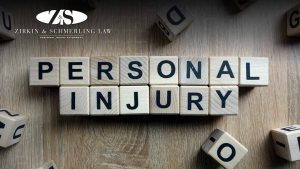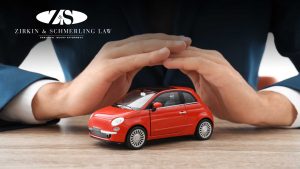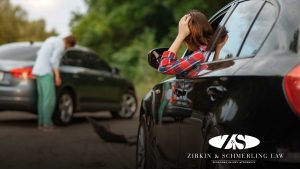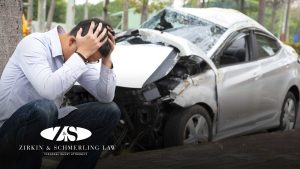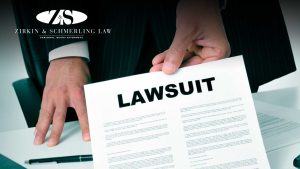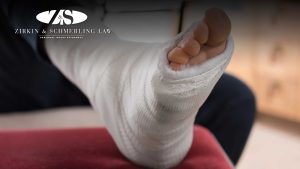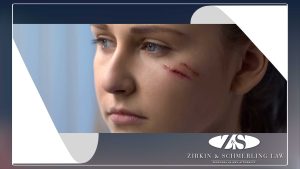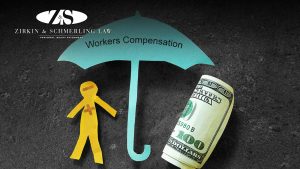
Broken bones caused by car accidents, pedestrian accidents, or slip and fall accidents can be serious. It’s important to focus on your treatment and recovery without worrying about looming medical bills. The Maryland broken bone injury lawyer at Zirkin & Schmerling Law can help with a free case evaluation.
Our Baltimore-based legal team has provided free consultations to people all over Maryland, helping them get the financial compensation they’re due on a contingency fee basis.
We provide top-notch legal representation that enables accident victims who have suffered broken bones to concentrate on the recovery process rather than the expenses related to injuries that are a result of someone else’s negligence.
Our qualified attorneys bring their decades of personal injury experience to your aid. Don’t suffer economic damages in addition to your extremely painful bone break.
Compensation for Broken Bone Injuries in Maryland
The expenses for post-accident care can add up and you should not be responsible for paying them. The person who caused your car crash is liable.
Here are the common types of expenses for which you can and should seek compensation:
- Medical treatment bills, including any nursing care, complications, or medical device expenses
- Lost wages due to missing work or being permanently unable to do your job
- Emotional pain and suffering the accident caused
Will Maryland’s Contributory Negligence Rule Impact My Broken Bones Injury Case?
Maryland law states that any person found to make even a minor contribution to an auto accident cannot receive any damages, regardless of the severity of their injuries.
Maryland insurance adjusters will use this law to their advantage. You must contact an experienced attorney to help you navigate this process to ensure you get the compensation you deserve.
Types of Broken Bones
There are so many ways a bone can break! While a simple bone break might just require time to mend, some broken bone injuries will require surgery to be functional again. It all depends on the nature of the injury.
Here are a few types of fractures:
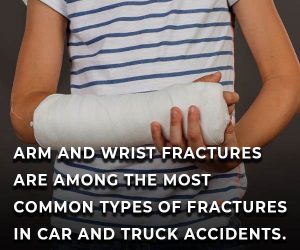
Arm and Wrist Fracture: Arm and wrist fractures are among the most common types of fractures in car and truck accidents. People instinctively brace themselves for impact using their arms and hands.
Leg Fracture: When a car is crushed, the driver’s legs might be crushed under car debris. The tibia (or shinbone) is the bone that breaks under such pressure, affecting the nerves and surrounding blood vessels in the leg.
Clavicle Fracture: One of the body’s more delicate bones, the clavicle (or collarbone) is particularly susceptible to breakage if a car accident victim lands hard on their shoulder. A clavicle fracture is usually treated with immobilization.
Hip and Pelvic Fracture: Ejection, often involving motorcyclists, can cause pelvic fractures due to the force at which the hip hits a hard surface. If the pelvis rings break in multiple places, there can be complications involving damage to the organs under the pelvic bone.
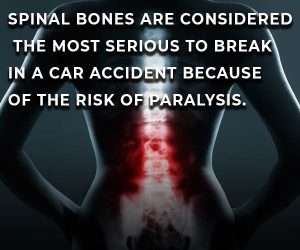
Spinal Fracture: Spinal bones are considered the most serious to break in a car accident because of the risk of paralysis. The 33 bones that make up the spine all protect the spinal cord. If any one of those bones breaks in a way that impacts the spinal cord, permanent paralysis is likely to follow.
Facial Fracture: Facial bones are fragile, which means if a person’s face hits any part of the car with excessive force, there’s a huge risk of damage. The cheekbones, nose, jaw, orbital socket, and even teeth will often break in a serious car accident.
Surviving is only one part of the post-accident equation. You must be proactive in receiving medical attention if you suspect a broken bone.
Open Fractures vs. Closed Fractures
A bone fracture refers to an injury that results in a partial or complete break of any bone. There are two classes of bone fractures: open fractures and closed fractures.

Open fracture— The medical term for this is compound fracture. It typically occurs when an open wound is present close to the broken bone, usually caused by bone fragments breaking through the skin. You can likely see the bone through the wound.
Closed fracture— Also known as a simple fracture, closed fractures are much easier to treat. While they are still painful, the fracture can be treated more conservatively.
Circumstances Leading to Broken Bones
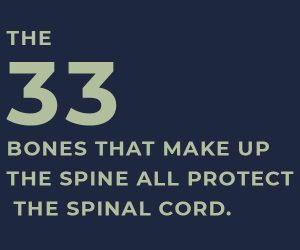
Not all car crashes will lead to broken bones; certain circumstances cause bones to break. However, two constants in accidents result in bone fractures: speed and force.
When cars collide at high speeds, broken bones often occur; impact can cause damage to the car and the body alike.
Similarly, the strength of force behind a car crash is a contributing factor. If your compact car is hit by a semi-truck, the force is more severe, leading to more significant injuries, including a broken bone.
Common Car Crash Scenarios Where Speed and Force Can Cause Broken Bone Fractures

Ejection: When people (especially those not wearing seatbelts) are thrown from a vehicle, they’ll sustain serious bone breaks when their bodies hit the ground or surrounding objects.
Blows to the Human Body: People inside the vehicle when a high-speed crash occurs are at risk of hitting an object within the car itself. Blows to the body can occur from airbags, steering wheels, and dashboards, resulting in broken bones.
Crushes: When a larger vehicle strikes a smaller vehicle, parts of the car are often crushed. Unfortunately, the occupants can suffer a similar fate: crushed bones, which can lead to compound fractures.
Rolls: When speed and force are both present, cars often roll. The victims within the car are often tossed around the car’s interior, their bodies rolling as the car does. This can lead to serious bone breaks, like a spiral fracture.
The injuries that result from these accidents can be life-threatening, requiring medical treatment.
How Are Broken Bone Injuries Treated?
If you’ve suffered a broken bone, head to the nearest hospital to receive professional treatment. Doctors will take x-rays and other scans to create a treatment plan. Treatments vary depending on the severity, but they often involve 6-8 weeks of recovery.
The Different Methods Doctors Use to Re-Set a Broken Bone
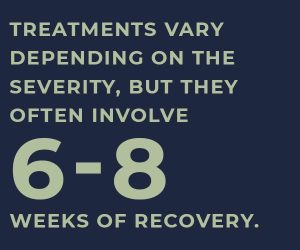
Splints: These offer light support to less severe injuries, like bone bends. They allow more movement than a cast.
Casts: Some casts immobilize the broken bones so they can heal without the risk of added injury. Other casts, known as functional casts, allow constrained movement. The cast you receive depends on the type, severity, and area of your break.
Traction: When a bone needs to be realigned, doctors will use a method called traction to restabilize the bone, so it can heal properly. Using ropes, pulleys, or weights, the bone is slowly pulled back into its appropriate position in the body.
Surgery: There are two types of surgery, including internal fixation; a surgeon will place screws or rods under the skin to affix bone fragments to their normal position. The second is external fixation; a metal bar outside of the skin connects to metal pins inside the fracture to hold bones in place during the healing process.
Damage Beyond Broken Bones
If you suffered a broken bone injury, once it begins to heal, it’s time to embark on another form of healing. The process of recouping damages, paying for your medical bills, and alleviating the emotional pain of your car accident is hard, but an experienced personal injury lawyer in Maryland will help you get the compensation you deserve.

Zirkin & Schmerling: Maryland Broken Bone Injury Lawyers
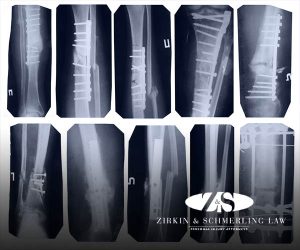
At Zirkin & Schmerling, our personal injury attorneys understand how to help our injured clients navigate an accident caused by negligence. If you or a loved one were injured in an accident, particularly if you’re suffering broken bones, do not hesitate to contact us today for a free consultation.
This free case evaluation provides helpful legal advice after you’ve suffered one of your worst experiences. Let our Maryland law firm help you recover. Call 410-753-4611 today.

